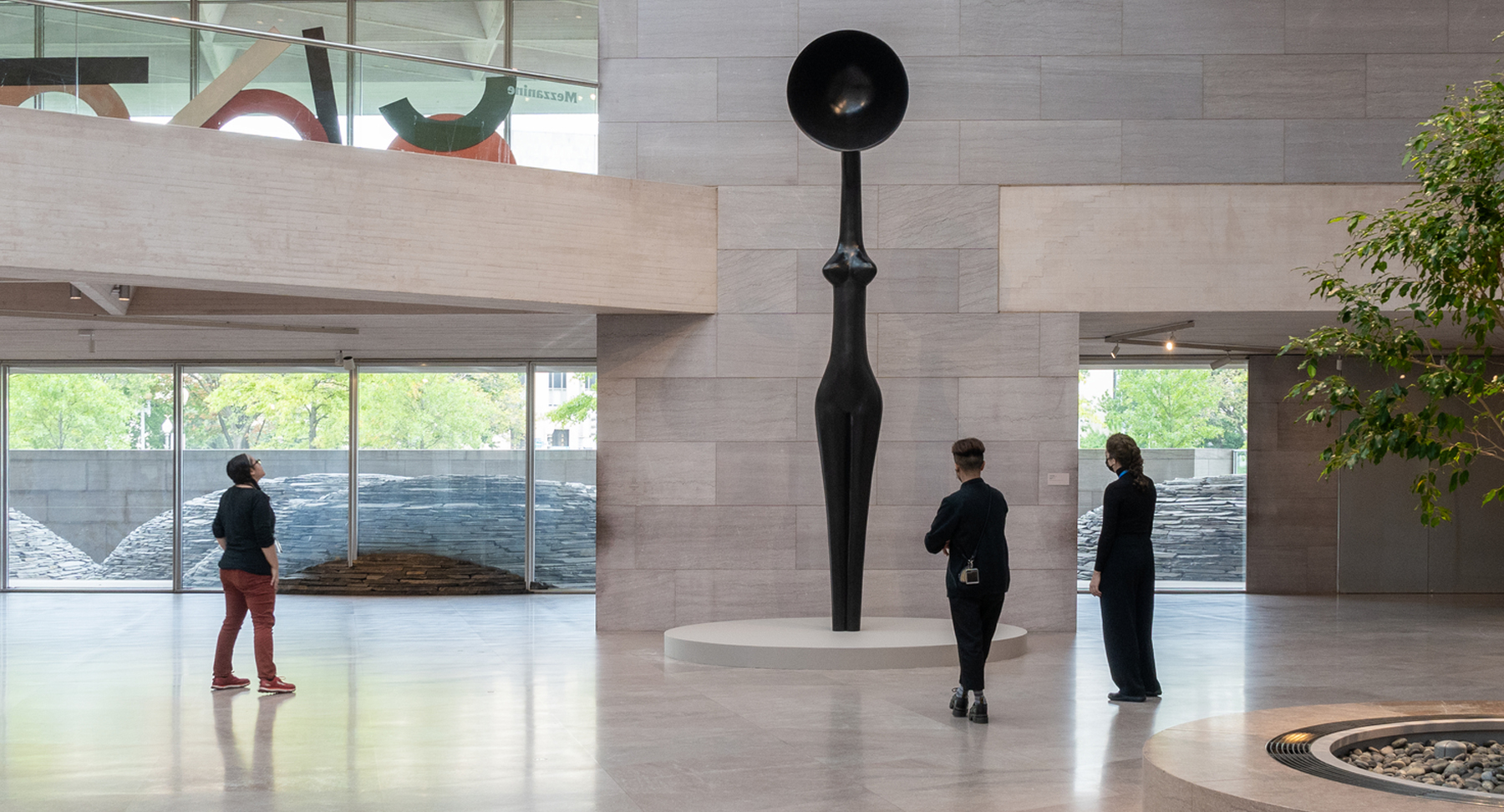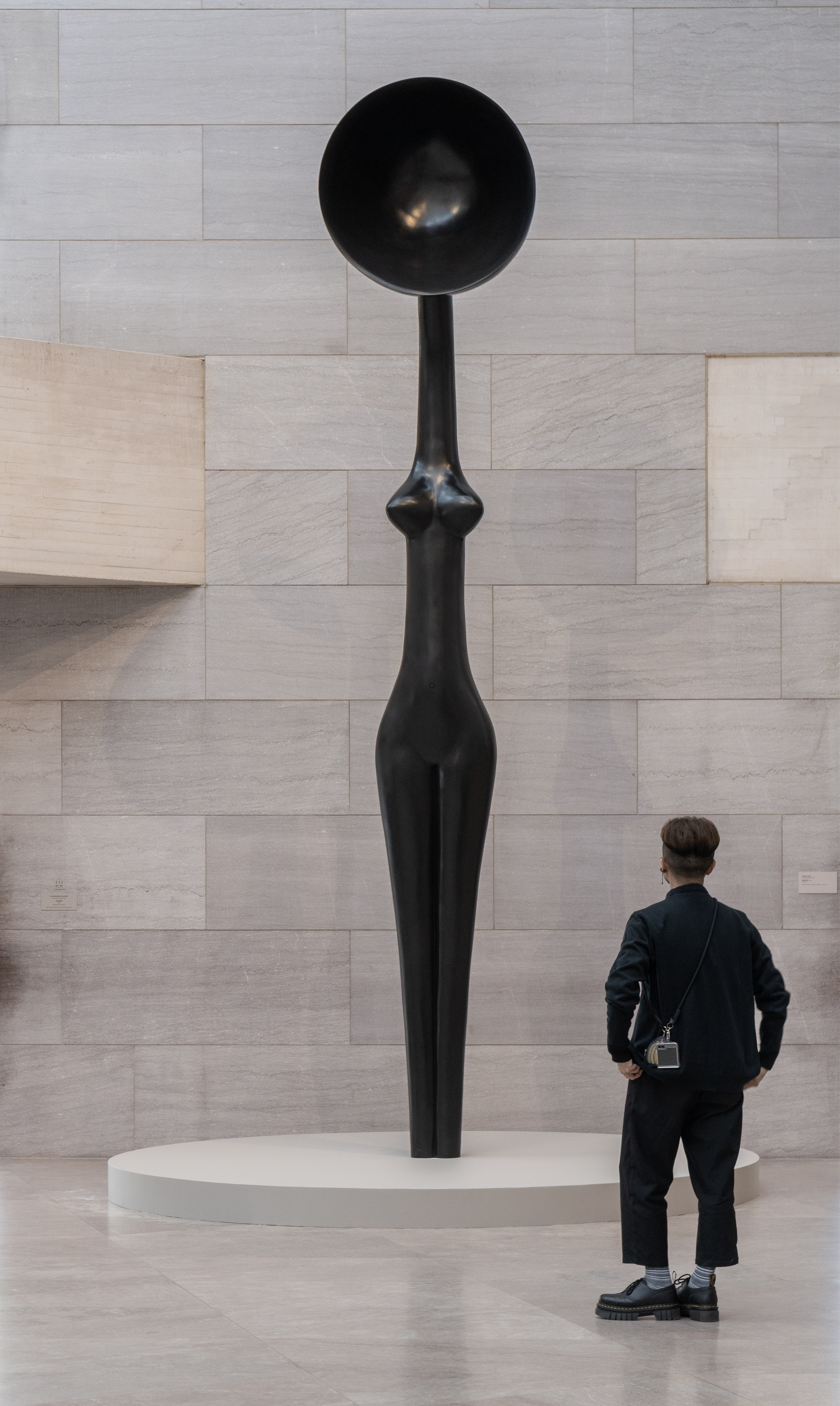Washington, DC, through the Scurlock Lens
Read an excerpt from our book, “Beauty Born of Struggle: The Art of Black Washington” on this local family of photographers.
Artist Spotlight
min read

Use our guide to explore 10 works by Black artists on view in our galleries.
We’ve also included 10 related works you can find nearby, in case you have more time during your next visit. Looking to learn even more? Join a gallery talk, offered on select Fridays and Sundays in February. Take this guide with you through the galleries. You will need a map. Pick one up at any information desk or use our app. Start in the West Building or East Building.
Estimated time for the tour: 40 minutes
West Building
See works by two of the earliest professional African American artists. And discover art of the Chicago Black Renaissance and Harlem Renaissance.
Richmond Barthé, Head of a Boy

This bust may look like bronze, but it’s actually painted plaster. Barthé made the humble material look refined and timeless.
The artist aimed to show the beauty of Black subjects through his sculpture. He modeled this bust after Julius Perkins, Jr., a young actor and musician in New York City’s Harlem neighborhood. At the time, this was the center of a Black cultural movement now known as the Harlem Renaissance.
Ground Floor, Gallery 15
Archibald John Motley Jr., Portrait of My Grandmother

You can see Motley’s love and respect for his 80-year-old grandmother, Emily Sims Motley, in the details of this work. He took special care painting her face and hands.
Motley made this portrait while living on the South Side of Chicago with his parents, sister, and grandmother. At the end of each day, he carried his grandmother up the stairs to the top floor, shared by her bedroom and his studio. The artist would later become a central figure of the Chicago Black Renaissance.
Main Floor, Gallery 66
More artists nearby: Joshua Johnson
Edward Mitchell Bannister, Palmer River

Take in the details of Bannister’s painting. Wildflowers sprinkle the shoreline. Low-hanging clouds reflect in the calm waters of the river.
Bannister first made his living as a barber after being denied access to formal artistic training because of his race. Early portrait commissions from prominent members of Boston’s Black community launched his career. He was deeply involved in antislavery activities during the Civil War. Afterward, he moved to Providence, Rhode Island, and turned his attention to landscape painting.
Main Floor, Gallery 68
Robert Seldon Duncanson, Still Life with Fruit and Nuts

Notice how Duncanson painted the different textures here, from the smooth skin of the apple to the shriveled grapes.
This painting comes from a small group of still lifes the artist made early in his career while living in Cincinnati, Ohio. But Duncanson was mostly celebrated for pastoral landscapes that often carried a religious or moral message. He was one of the first African American artists to become popular abroad.
Main Floor, Gallery 69A
See art by two of DC’s most important painters as well as imaginative works by some of today’s leading sculptors.
Simone Leigh, Sentinel

Simone Leigh, Sentinel, 2022, bronze, Gift of the Glenstone Foundation, 2023.25.1
Sentinel’s form refers to izinkhezo, carved ceremonial spoons of the southern African Zulu people. These spoons represent feminine beauty and allude to women’s labor.
The figure’s vessel-like, faceless head also resembles many of Leigh’s other sculptures. The lack of a face works on two levels. It’s a reference to the anonymity and obscurity Black women have faced throughout history. At the same time, it shows Black women protecting and preserving themselves by withholding their selves.
Much of Leigh’s work confronts assumptions about women’s bodies, race, beauty, and community.
Ground Floor, Atrium
Lois Mailou Jones, Indian Shops, Gay Head, Massachusetts

Although Jones traveled widely, she returned to her family’s home on Martha’s Vineyard every summer. The sun and water there had originally inspired to her to paint.
This idyllic seaside scene won a prize for landscape painting at the 1941 Corcoran Gallery of Art Exhibition. But Jones had to have her white friend Céline Tabary submit the work because at the time the Corcoran did not accept works from African American artists.
Jones served on the art faculty at Howard University for 50 years. She also convened the Little Paris Group in Washington, DC, a salon where fellow artists like Alma Thomas came to paint live models and have their work critiqued.
Ground Floor, Gallery 106C
Uncover the hidden stories behind this painting
More artists nearby: Hughie Lee-Smith, Hale Woodruff, Edward Loper, James Amos Porter
Chakaia Booker, Egress

Can you tell what this work is made from? Look at the different textures of the fused, spiraling pieces. Booker made her plant-like sculpture out of the material she most often works with: recycled rubber tires.
Booker makes meaning of the tires’ different elements. Their variety of tones mirrors human diversity. Their treads evoke African scarification and textile designs.
More artists nearby: Theaster Gates, Martin Puryear
Thornton Dial, Testing Chair (Remembering Bessie Harvey)

Thornton Dial dedicated this silvery throne to sculptor Bessie Harvey a year after she died. Dial wrapped a chair using both manufactured items and scraggly branches that echoed the natural materials Harvey worked with.
“My art,” Dial has said, “is talking about the power. I try to show how [Black people] . . . came to help make the power of the US what it is today. My art is the evidence of my freedom.”
Upper Level, Gallery 407B
More artists nearby: Norman Lewis, Marion Perkins
Alma Thomas, Pansies in Washington

Our tour wouldn’t be complete without seeing a radiant work by DC’s own Alma Thomas. The abstract painter created the kaleidoscopic effect you see here using short dabs of color in organized patterns. An avid gardener, Thomas was deeply inspired by flowers.
“Through color I have sought to concentrate on beauty and happiness, rather than on man’s inhumanity to man,” Thomas said.
Upper Level, Gallery 407C
More artists nearby: Sam Gilliam
Faith Ringgold, The American People Series #18: The Flag is Bleeding

American flags appear in many of Ringgold’s works. “The flag is the only truly subversive and revolutionary abstraction one can paint,” she has said. Partially visible behind this flag’s stars, a Black man holds a knife in one hand and covers his bleeding heart with the other. It is up to us to interpret the relationship between these three figures.
Faith Ringgold has been creating art that addresses race, gender, and power in American culture for some 60 years. This painting comes from her first major series of political works, made in the 1960s.
Upper Level, Gallery 407D